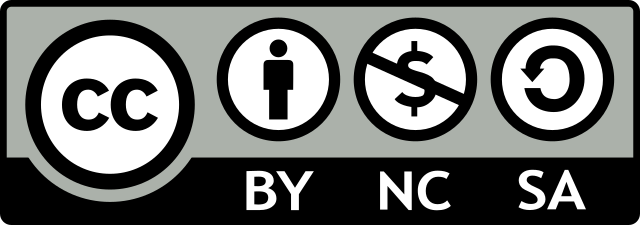Conflict of Pragmatic Principles in the Arabic Conjunction “Wa”: A Corpus-Based Study
Abstract
The conjunction wa (الواو) in Arabic is a coordinating conjunction that connects words with words, phrases with phrases, or clauses with clauses. However, the conjunction wa is different from other conjunctions because it has different uses, that is, it has different meanings according to its grammar, resulting in a conflict of pragmatic principles. In this research, researchers used a corpus linguistics-based approach, namely collocation analysis (words that appear together) and concordance (contextual) data, data obtained from the Arabic Sketch Engine corpus. Then the researcher noted important things regarding the function of the conjunction wa according to early (classical) Arabic language experts which are not found in modern Arabic. The conjunction wa is divided into two parts, namely: wa 'amilah (wa which cannot be in one word by itself) and wa ghiru 'amilah (wa which can stand alone). From the top 20 data taken from the Sketch Engine Arabic language corpus, there are several functions of the conjunction wa in a sentence including: 14 as the conjunction wa ‘athaf, 5 as the conjunction wa isti'nafiyah/ibtidaiyah, and 1 as the conjunction wa hal. From the overall data it can be concluded that the majority of wa conjunctions function as wa ‘athaf, namely connecting nouns with nouns or verbs with verbs and so on.
References
Al-Ghalāyaini, M. (2017). Jāmi’ Ad-Durūs Al-’Arobiyyah. Bairut-Lebanon. Dār Al-Kutub Al-Ilmiyyah.
Al-Wasif, M. ’Ied. (1938). At-Tuhfatu as-Saniyah. Bairut-Lebanon. Al-Haramain.
Alwi, H., Lapoliwa, H., Sugiyono, Moeliono, A. M., & Sasangka, S. S. T. W. 2017. Tata Bahasa Baku Bahasa Indonesia edisi keempat. Jakarta: Balai Pustaka.
Aoun, J., Benmamoun, E., & Sportiche, D. (1994). Agreement , Word Order , and Conjunction in Some Varieties of Arabic. Linguistic Inquiry, 25(2), 195–220.
Barakāt, I. (2007). An-Nahwu Al-’Arabi. Bairut-Lebanon. Dāru al-Nasri Lil-Jāmiāt.
Farid, E. K. 2016. “Sintaksis Bahasa Indonesia Dan Bahasa Arab (Studi Analisis Kontrastif Frasa, Klausa, Dan Kalimat)”. Jurnal Bahtsuna. Vol. 4 (1). Hlm. 1–23. https://lp3mzh.id/index.php/bahtsuna/article/view/70/68
Kridalaksana, H. 2009. Kelas Kata dalam Bahasa Indonesia (kedua). Jakarta: Gramedia Pustaka Utama.
Moleong, L. 2010. Metode Penelitian Kualitatif. Bandung: Remaja Rosdakarya.
Muhammad, bin A. bin A. B. 2014. Al-Kawākib ad-Durriyah. Bairut-Lebanon. Dar Al-kutub Al-ilmiyyah.
Namaziandost, E., Nasri, M., & Keshmirshekan, M. H. (2019). Cohesive Conjunctions in Applied Linguistics Research Articles among Iranian and Non-Iranian Researchers: A Comparative Corpus-based Study. Journal of English Language Studies, 4(2), 101. https://doi.org/10.30870/jels.v4i2.5431
Nuha, U. (n.d.). حروف العطف وتدرجة التربية في سورة لقمان 12-19(دراسة نحوية).
Ramdiani, Y. 2014. “Sintaksis Bahasa Arab (Sebuah Kajian Deskriptif)”. El-Hikam, Jurnal Pendidikan Dan Kajian Keislaman. Vol. 7. Hlm. 112–114. https://core.ac.uk/reader/229127580
Robbani, A. S., & Zaini, H. (2022). Interferensi Bahasa Sasak terhadap Bahasa Arab Santri. Diglosia: Jurnal Kajian Bahasa, Sastra, Dan Pengajarannya, 5(2), 317–326. https://doi.org/10.30872/diglosia.v5i2.347
Salsabila, F., Yuliawati, S., & Darmayanti, N. (2023). Konstruksi preposisi “pada” dan kepada “dalam” ragam bahasa internet: kajian sintaksis berbasis korpus. Diglosia: Jurnal Kajian Bahasa, Sastra, Dan Pengajarannya, 6(3), 859–870. https://doi.org/10.30872/diglosia.v6i3.674
Séguin, M. (2021). Corpus based study of verbs explain and clarify as an example of assistance in pedagogical settings. 2(2020), 144–184. https://doi.org/10.2478/exell-2021-0003
Stefanowitsch, A. (2020). Corpus linguistics: A Guide to the methodology. In Textbook on Corpus Linguistics. http://langsci-press.org/catalog/book/000
Sudaryanto. 1993. Metode dan Aneka Teknik Analisis Bahasa. Yogyakarta: Duta Wacana University Press.
Taha, K. T., Jarrah, M. A., & Al-Jarrah, R. S. (2014). The Discoursal Arabic Coordinating Conjunction Wa (And). International Journal of Linguistics, 6(4), 172. https://doi.org/10.5296/ijl.v6i4.4547
Wali, A., Sulistyowati, Firmonasari, A., & Ibtisam. 2024. “Representation of Ethnic Symbol As An Emergency Status In The Movie “Tunanganku Mautku”: Semiotics Analysis”. Southeast Asian Language and Literature Studies (SALLS) Journal. Vol. 1 (1). Hlm. 75-85.
Wijayanti, A., & Firmonasari, A. (2023). Pemberitaan penganiayaan David Ozora pada media Kompas.com : analisis wacana berbasis korpus. Diglosia: Jurnal Kajian Bahasa, Sastra, Dan Pengajarannya, 6, 1125–1136.
Yagi, S. M., & Ali, M. Y. (2008). Arabic conjunction wa: A conflict in pragmatic principles. Poznan Studies in Contemporary Linguistics, 44(4), 617–627. https://doi.org/10.2478/v10010-008-0029-4
Yasin, D. M. (2018). Konjungsi Ekstratektual Dalam Teks Al-Mutawassimin. 7(1), 115–131.
Copyright (c) 2024 Abdul Wali, Sulistyowati, Ibtisam

This work is licensed under a Creative Commons Attribution-NonCommercial-ShareAlike 4.0 International License.

